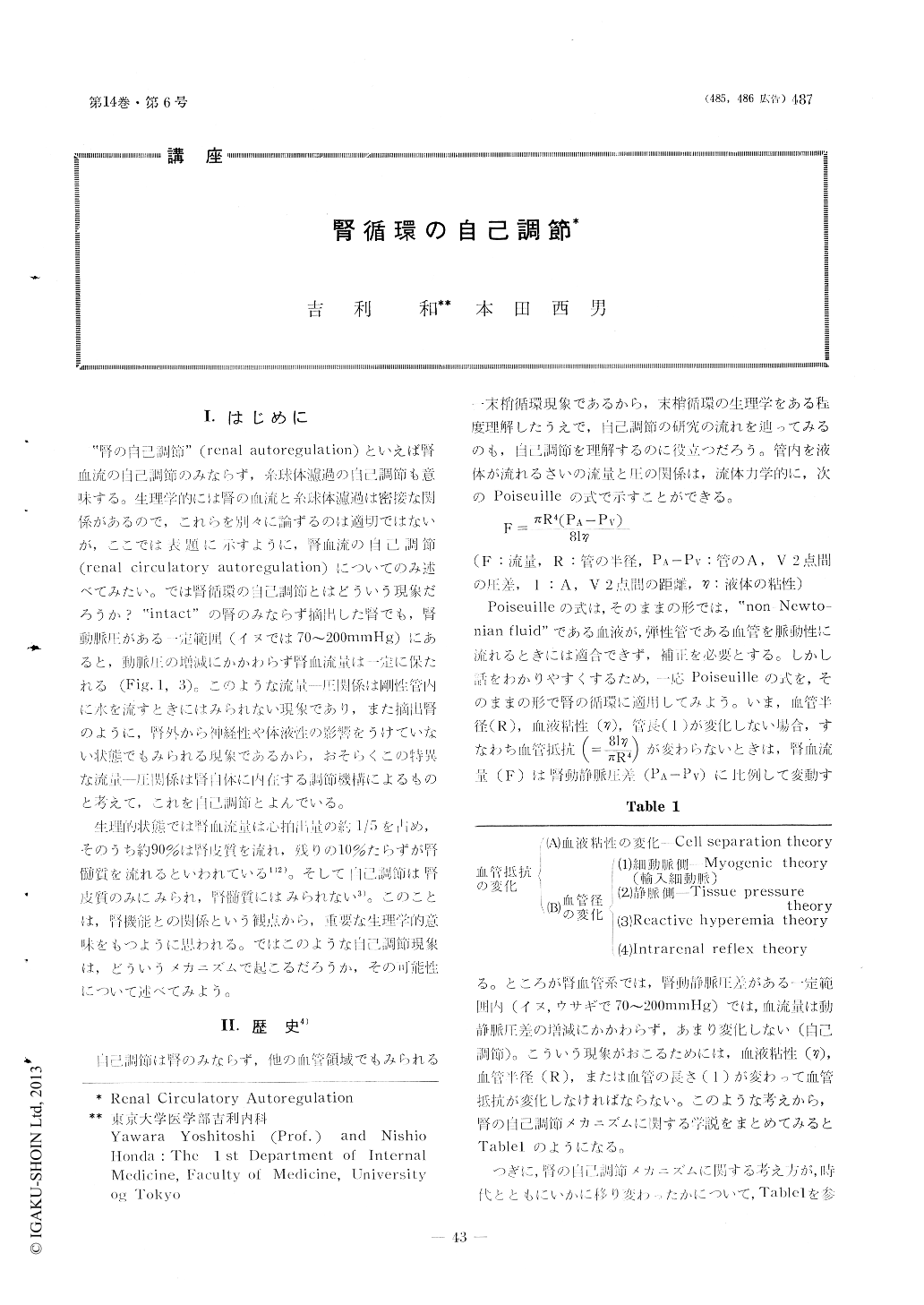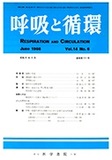Japanese
English
- 有料閲覧
- Abstract 文献概要
- 1ページ目 Look Inside
I.はじめに
"腎の自己調節"(renal alutoregulation)といえ計ば腎血流の自己調節のみならず,糸球体濾過の自己調節も意味する。生理学的には腎の血流と糸球体濾過は密接な関係があるので,これらを別々に論ずるのは適切ではないが,ここでは表題に示すように,腎血流の自己調節(renal circulatory autoregulation)についてのみ述べてみたい。では腎循環の自己調節とはどういう現象だろうか?"intact"の腎のみならず摘出した腎でも,腎動脈圧がある一定範間(イヌでは70〜200mmHg)にあると,動脈圧の増減にかかわらず腎血流量は一定に保たれる(Fig.1,3)。このような流量—圧関係は剛性管内に水を流すときにはみられない現象であり,また摘出腎のように,腎外から神経性や体液性の影響をうけていない状態でもみられる現象であるから,おそらくこの特異な流量—圧関係は腎自体に内在する調節機構によるものと考えて,これを自己調節とよんでいる。
生理的状態では腎血流量は心拍出量の約1/5を占め,そのうち約90%は腎皮質を流れ,残りの10%たらずが腎髄質を流れるといわれている1)2)。そして自己調節は腎皮質のみにみられ,腎髄質にはみられない3)。このことは,腎機能との関係という観点から,重要な生理学的意味をもつように思われる。
Possible mechanisms for renal circulatory adjustments following alterations in renal artery, vein and ureter pressures were reviewed, especially in relation to renal autoregulation. Most of available data suggest myogenic responses of preglomerular arter-iolar smooth muscle to transmural pressure changes as the primary mechanism for renal circulatory autoregulation, but it is not to dismiss a participation of changes in postglo merular resistarnce due to the tissue pressure mechanism.
Also it was emphasized that renal aut ore gulation should be consiclerd not only as a circulatory phenomenon but in relation to renal function and metabolism.

Copyright © 1966, Igaku-Shoin Ltd. All rights reserved.


